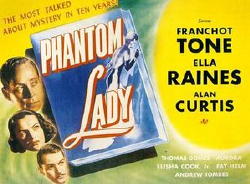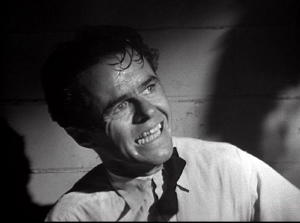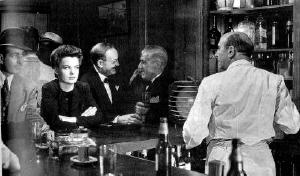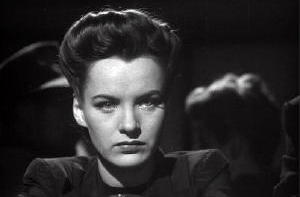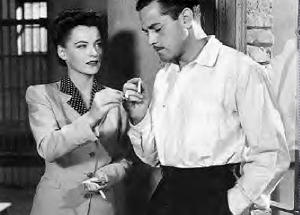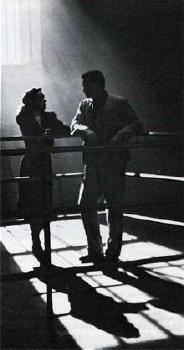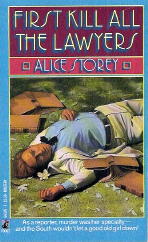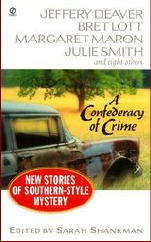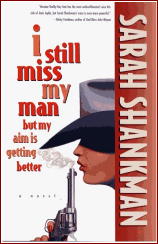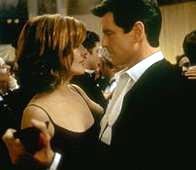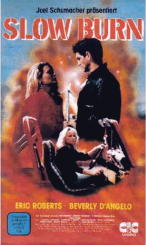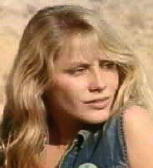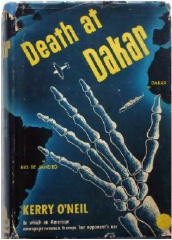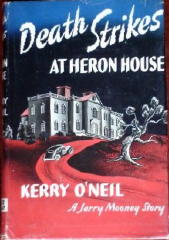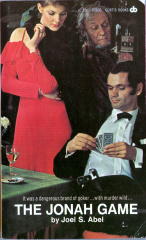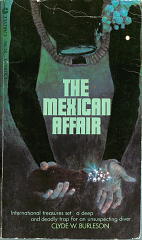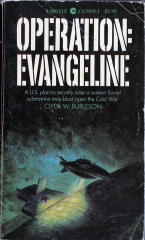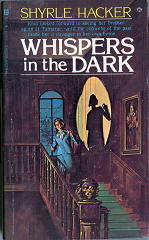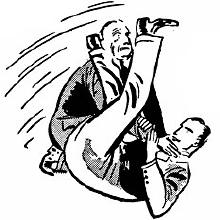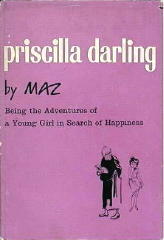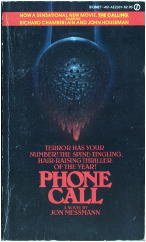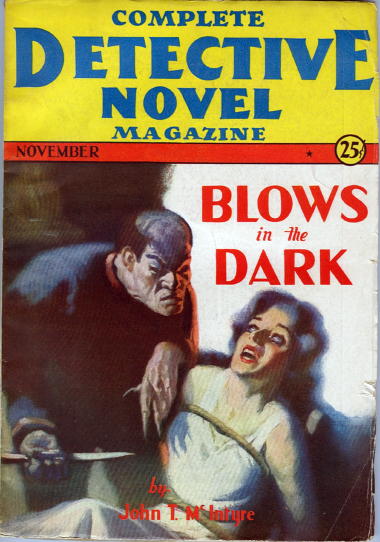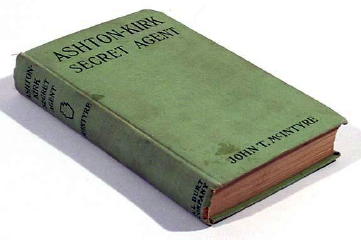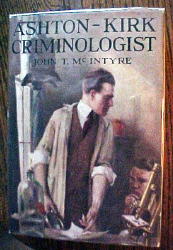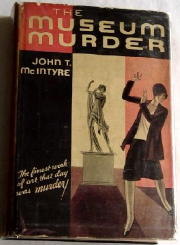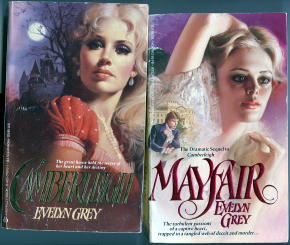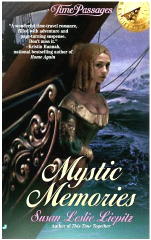Thu 1 May 2008
More on the radio version of ELLERY QUEEN.
Posted by Steve under Characters , Old Time RadioNo Comments
One of the people I wanted to see at the Windy City pulp and paperback show this past weekend was Martin Grams, Jr., who with Mike Nevins, is the co-author of The Sound of Detection: Ellery Queen’s Adventures in Radio, which is in turn a revision of an earlier book from 1981 by Nevins and Ray Stanich.
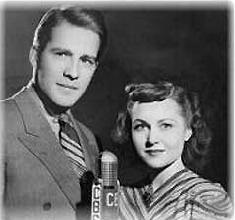
Martin’s just over 30 years old, but as a radio historian, he’s probably the best there’s ever been, already having 15 books on Old Time Radio (and TV) to his credit, including ones on Sam Spade, Inner Sanctum, Suspense, Gang Busters, and (upcoming) The Green Hornet.
Besides the fact that he always has several tables filled with DVDs of old TV show at these affairs, to the dismay of my credit card balance, a major reason I wanted to see him was to ask him about this photo I used in Mike Nevins’ most recent column. It’s a photo of two of the stars of the Ellery Queen radio program. Mike didn’t know I was going to use it – I found it on the Internet somewhere – and neither he nor I could identify who either of them were.
The CBS logo on the microphone helped narrow it down, but not enough to be sure. Martin would know, Mike said, and so he did, at least in part. Right there on the floor of the dealers’ room, Martin whipped out his laptop, fired up his Internet access, took a look at the image on my blog, and said, “That’s Hugh Marlowe, but I’m not sure who the woman is.” She’s the one who (presumably) played Nikki Porter, Ellery’s assistant on the radio shows. (She also appeared in some of the EQ novels and short stories, but not on the regular basis that she was in the radio shows.)
“I think that it’s Marian Shockley, but I’m not positive,” said Martin, and he sent off some emails to some friends of his who might want to chip in on the question. In reply Jim Widner confirmed Hugh Marlowe, but again, he wasn’t positive about Marian Shockley. Which is where the question lies, at the moment, almost but not quite solved.
But as long as we’re talking Ellery Queen here, I’ve found a copy of the Ellery Queen book that Mike was talking about in his column that brought about this question in the first place.

It’s Chillers and Thrillers: A Book of Mystery Sketches. No editor is stated, but as you see, it was published in oblong softcover format by Street & Smith Publications. Prepared and distributed by the Special Services Division, A.S.F. [Army Service Forces], this is Volume XVIII in a series of “At Ease” paperbacks.
The date as stated on the title page: 1945; it is a short 128 pages long.
You can go back and re-read Mike’s column for his discussion of the contents, but since they don’t seem to be documented elsewhere, here’s a complete index. All of the plays are copyright 1945.
* 5 * Part One: “Quick As a Flash” series * introduction & instructions
* 7 * The Mysterious Mr. Harris * Eugene Wang & Harry Kleiner * radio play [Big Town D.A. Steve Wilson]
* 13 * The Rise and Fall of Rome * Eugene Wang & Harry Kleiner * radio play [Pamela North]
* 21 * The Man No One Believed * * Eugene Wang & Harry Kleiner * radio play [Charlie Chan]
* 29 * Murder in the Afternoon * Eugene Wang & Harry Kleiner * radio play [Dr. Ordway, the “Crime Doctor.”]
* 36 * Murder on the Houseboat * Eugene Wang & Harry Kleiner * radio play [Mr. and Mrs. North]
* 41 * The Mystery of the Horse Pistol * Eugene Wang & Harry Kleiner * radio play [Dr. Ordway, the “Crime Doctor.”]
* 47 * Part Two: “Solve a Mystery” series * introduction & instructions
* 51 * The Adventure of the Blue Chip * Ellery Queen * radio play [Ellery Queen]
* 72 * The Adventure of the Foul Tip * Ellery Queen * radio play [Ellery Queen]
* 90 * The Adventure of the Glass Ball * Ellery Queen * radio play [Ellery Queen]
* 108 * The Orderly Room Murder * Anonymous * radio play
* 121 * The Shadow That Walked * Eugene Wang & Harry Kleiner * radio play [Lamont Cranston / The Shadow]
Notes: (1) Quick As a Flash was a radio quiz program on Mutual running on Sundays and later Saturdays from July 16, 1944 to December 17, 1949. As a portion of contest between various contestants, “a fully dramatized short mystery play provided the clues. These plays featured stars of popular detective series, performing as their well known characters.” (The link leads to a webpage listing all of the radio quiz programs hosted by Bill Cullen. Quick As a Flash was one of them.)
(2) On the Big Town radio program, Steve Wilson was not the D.A., but rather the crime-fighting editor of The Illustrated Press.
(3) Jerry North does not appear in the first of the two Mr. & Mrs. North plays.
[UPDATE.] 05-02-08. I received an email from Mark Murphy last night that seems to settle the Marian Shockley question:
This Web page from eBay has what is apparently a picture of Ms. Shockley from Abie’s Irish Rose. See what you think.
Some additional digging reveals that she was married to To Tell the Truth host Bud Collyer.
Hope this helps.
Mark Murphy
>>> And indeed it does. Thanks, Mark. Martin and I are in agreement that the women in the two photos are one and the same. The image is copyright protected, so I won’t show it here. And since it’s an eBay auction, it won’t appear on the Web forever. But it’s there now; take a look while you can.

